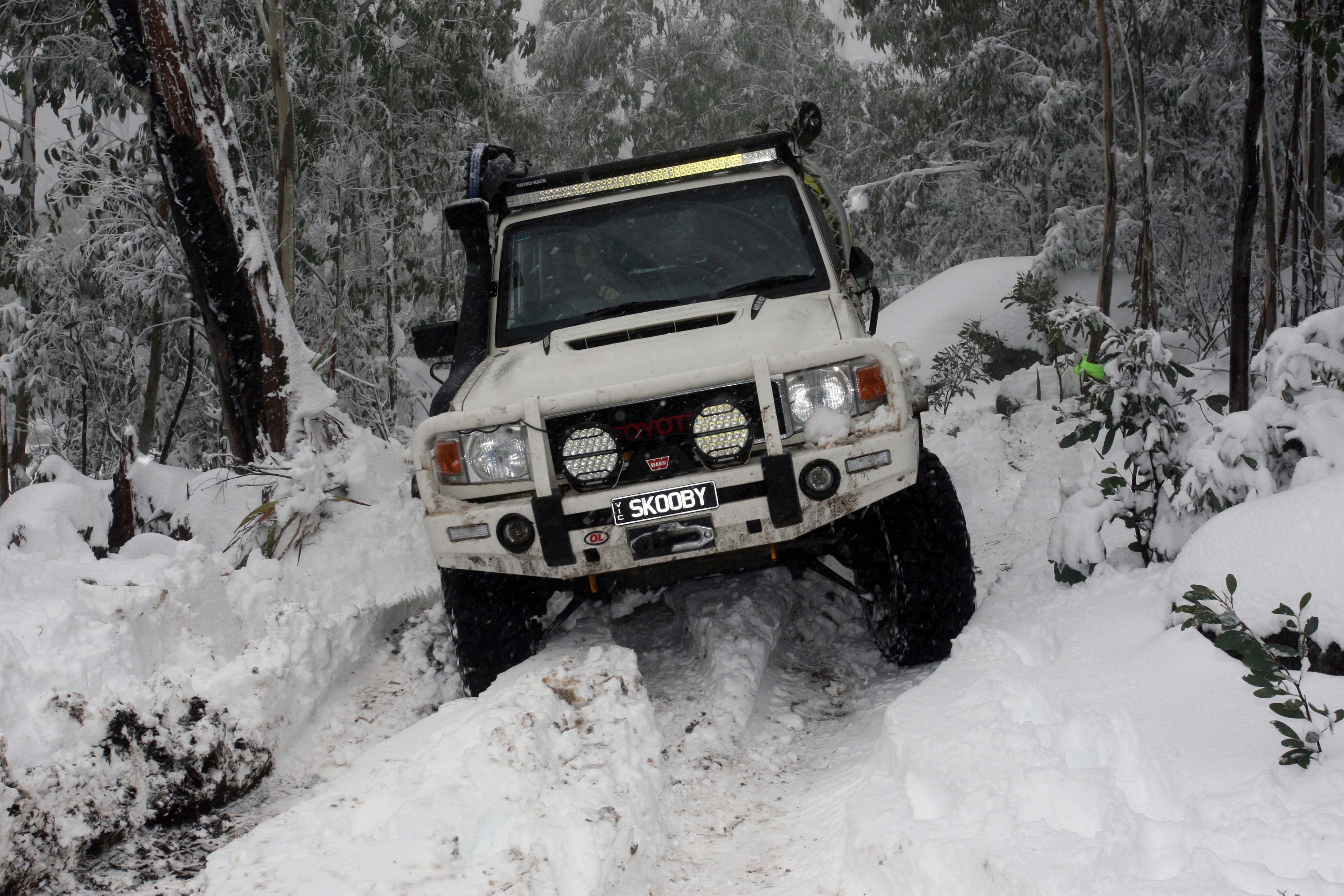
When it comes to varied terrains, Australia has to be darn close to first place the world over.
There are not too many places out there where you can experience 50°C days in the desert, freezing alpine blizzards, and pristine sub-tropical sand islands all within a few days of driving.
Each terrain not only requires an entirely different skill set and mentality to tackle, they also require vastly different vehicle preparation to get the most out of them. A temperature range of nearly 60°C is no laughing matter.
Whether it’s a quick reminder for the southern states, or a 101 intro to snow wheeling for our northern brothers and sisters, we’re looking at a quick hit list of everything you need to not only survive the snow this winter, but thrive.
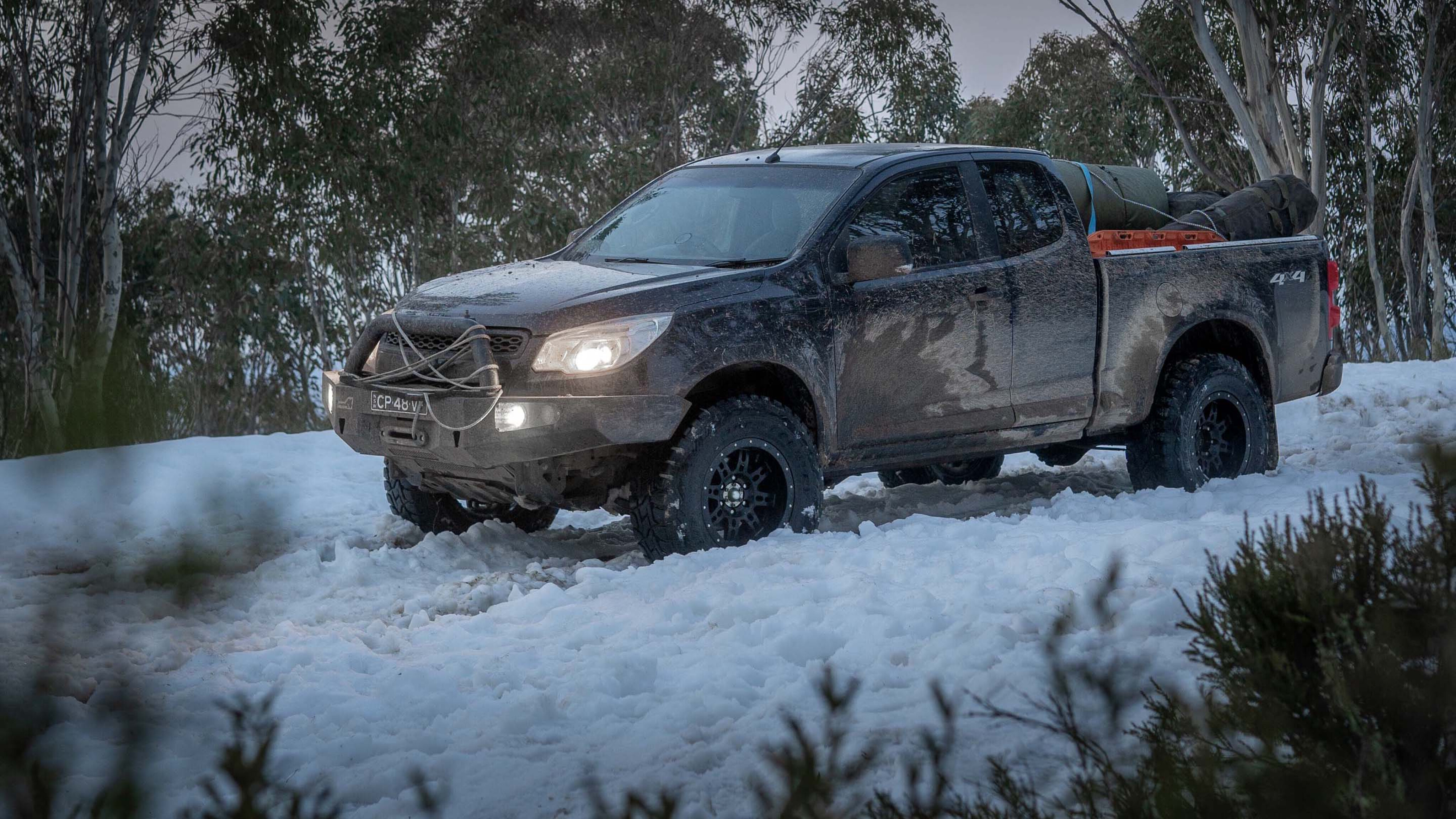
Get the rig ready
Most of us tend to think of mechanical contraptions as generally infallible; they either work or they don’t.
After all, when was the last time you thought about the operating temperature range of your toaster? But your 4x4 is a little different, especially as it ages.
The difference between -5°C and 25°C will have a drastic effect on the viscosity or thickness of your engine’s oil; the colder it is, the thicker the oil, and as a result the engine becomes harder to turn over requiring significantly more oomph from the battery to get it fired up.
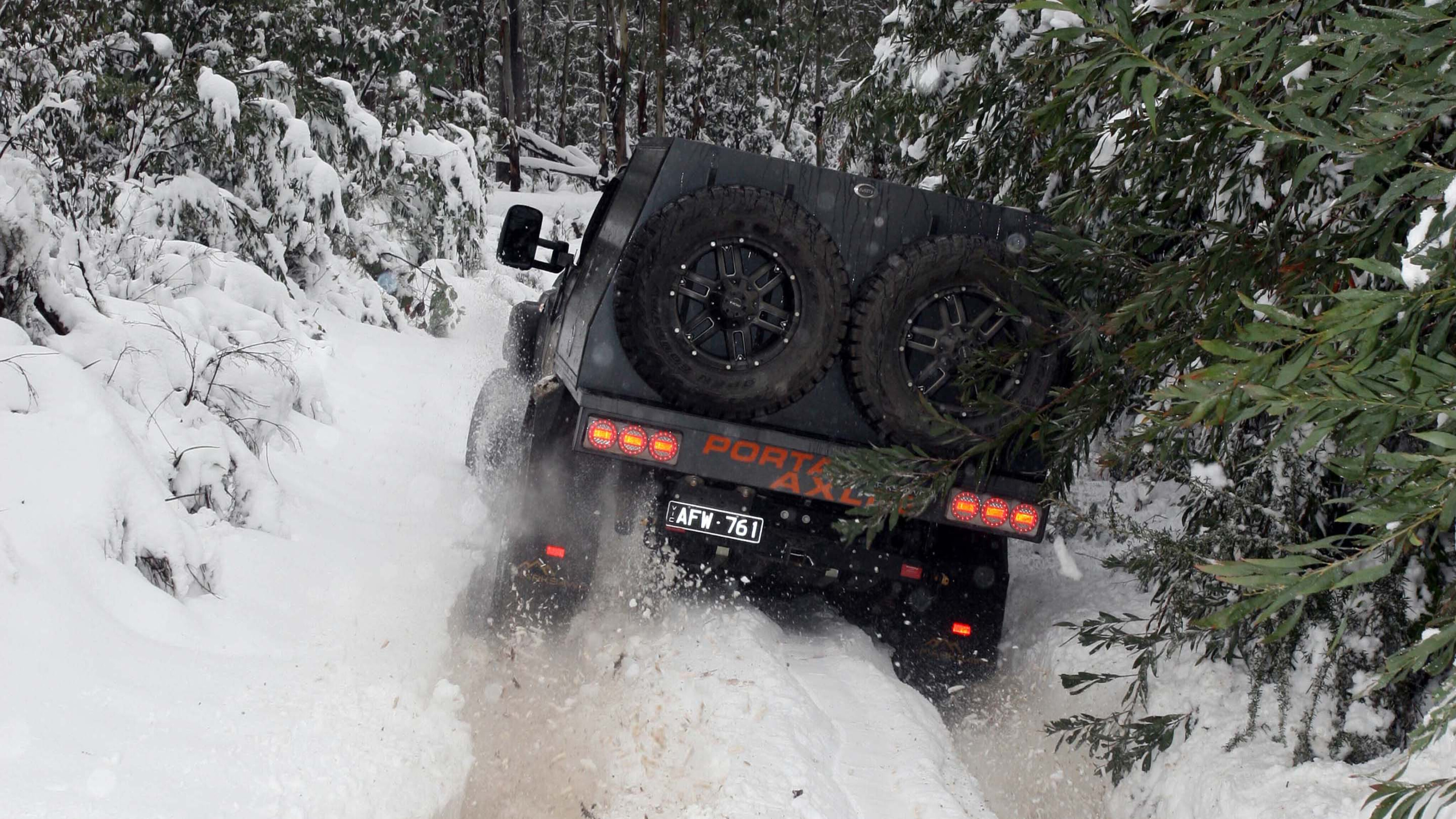
Ironically, the cold weather also slows the chemical reaction in your battery giving you less oomph as well.
If your battery is on its last legs, that first alpine night might just tip you over the edge where it can’t overcome the cold. Before heading to the snow, replace your old starter battery and ensure your engine’s oil has the correct winter weight. The low temperatures will also stiffen up any plastic or rubber components so run your eyes over fan belts and radiator hoses too.
You’ll need to pay special attention to the fuel in your tanks too. Diesel contains paraffin wax to help with lubrication but down around 0°C that paraffin starts to solidify, causing the diesel to thicken to the point it’ll clog injectors and fuel filters.

If you’re heading anywhere snow is possible, fill up your tanks with alpine diesel.
There’s a variety of additives that can be mixed in depending on the blend that’ll allow your diesel to run as normal below freezing temperatures.
Finally, poke a watchful eye under the radiator cap to have a look at your coolant situation, to make sure the last dodgy mechanic didn’t just fill it with straight water.
Coolant, or anti-freeze as it’s otherwise known, has additives to not only raise the boiling point above 100°C, but lower the freeze point below 0°C. It doesn’t take an active imagination to see the effects of a frozen radiator on reliability.
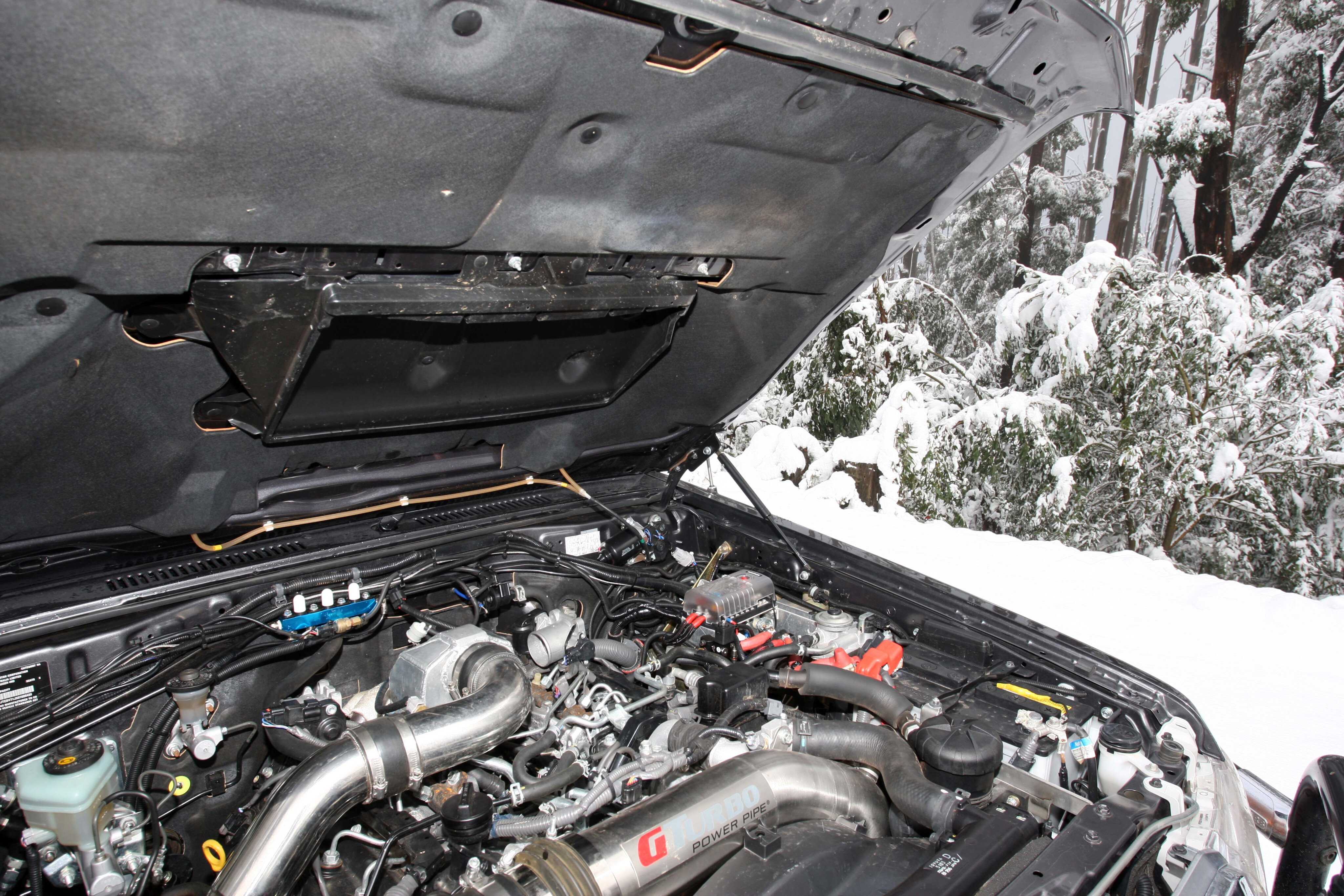
The gear to bring
When it comes time to decide the right tyres for your snow-bound adventure machine there are endless arguments back and forth between mud terrains and all terrains.
It’s generally thought that an AT will perform better than an MT on hard-packed snow due to the higher number of biting edges, while the MT’s large voids allow them to dig deep into soft powder.
Either way, an M+S symbol will mean your tyre’s rubber compound has been formulated to stay pliable in low temperatures.
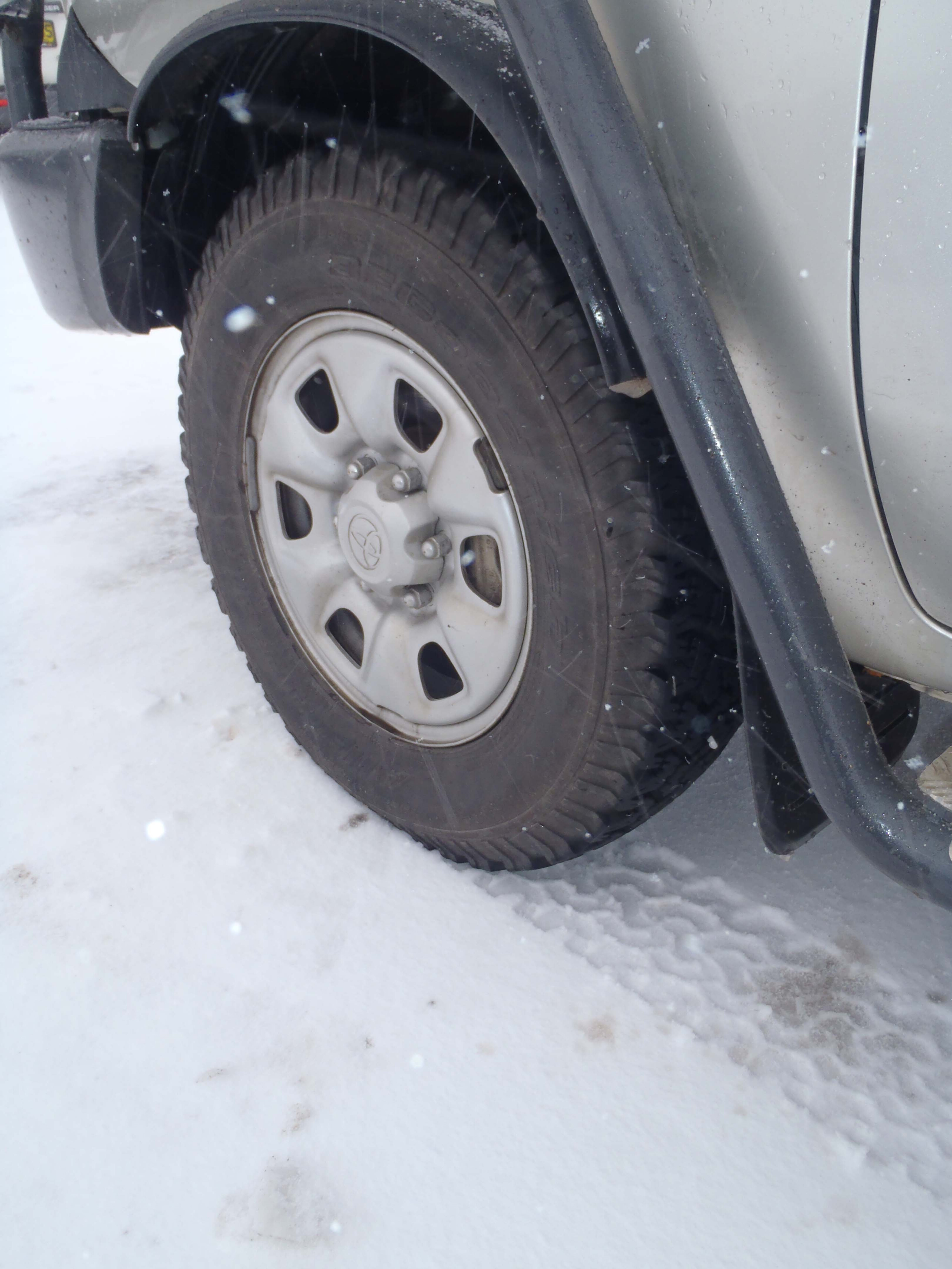
If you find the limits of traction, a set of recovery boards can be a handy ‘get out of jail free card’
Like any other terrain, dropping air pressures will give your tyres significantly more traction; you’ll need to go lower in soft pack vs hard pack, so don’t be afraid to experiment. If you find the limits of traction, a set of recovery boards can be a handy ‘get out of jail free card’ and can double as a shovel in a bind.
Like any backcountry adventure, you’ll need to have some means of self-extrication, so make sure your rig has a recovery kit and either a winch or a second 4x4 in the convoy.
Don’t forget a UHF and a satellite phone for if things go proper pear shaped.
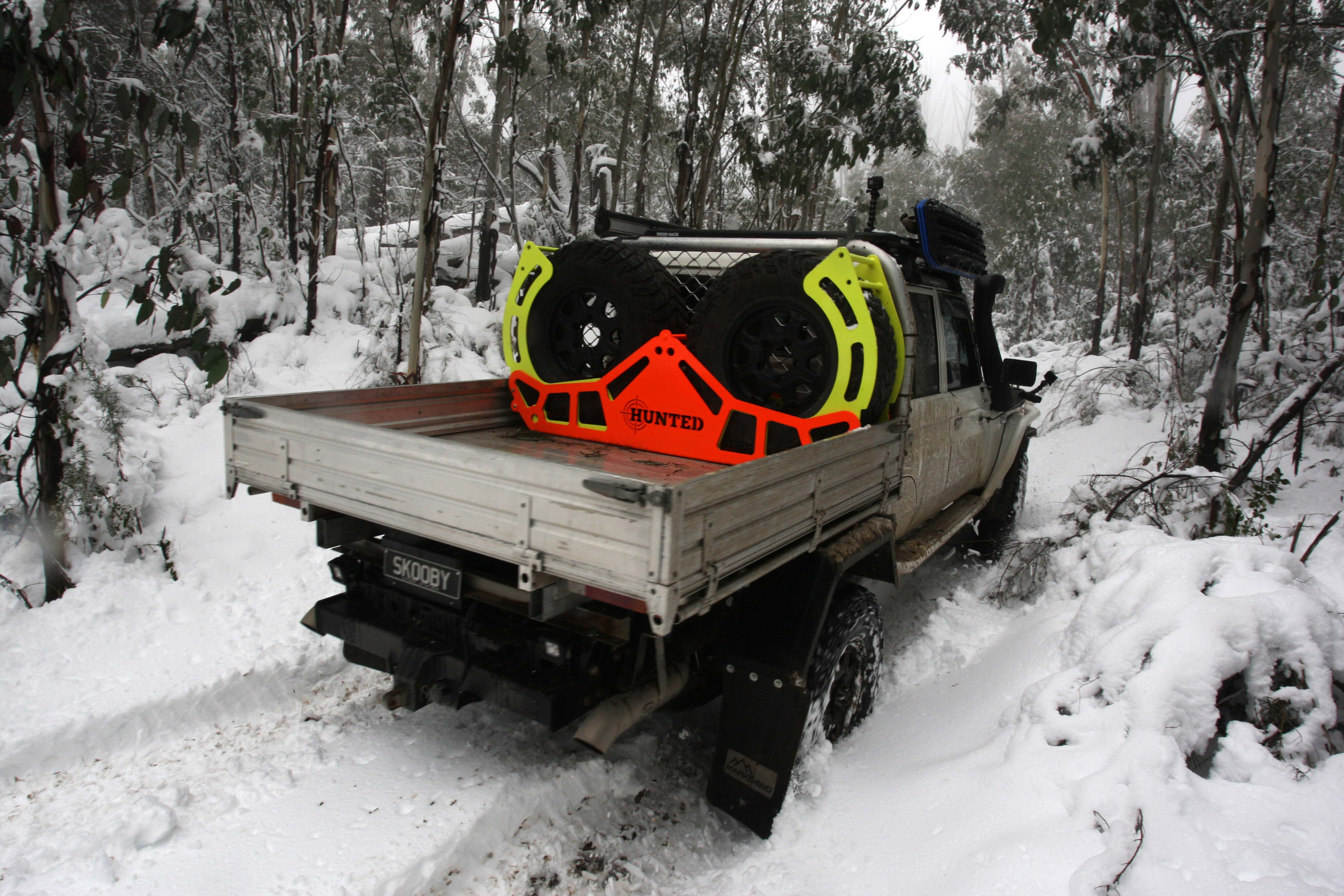
Behind the wheel
Snow driving is one of the best experiences you’ll ever have behind the wheel, but your rig making it home afterwards is even better.
Whether you’re on the soft stuff itself or still on the winding mountain pass to get there, it’s important to keep all your inputs smooth. That means gentle steering and subtle brake and accelerator inputs to ensure your rig does exactly what you need it to. Don’t white knuckle the steering wheel in terror, but do leave a little extra braking room to account for the low traction.
When you get higher up in the mountains remember that snow won’t sit evenly on the ground.
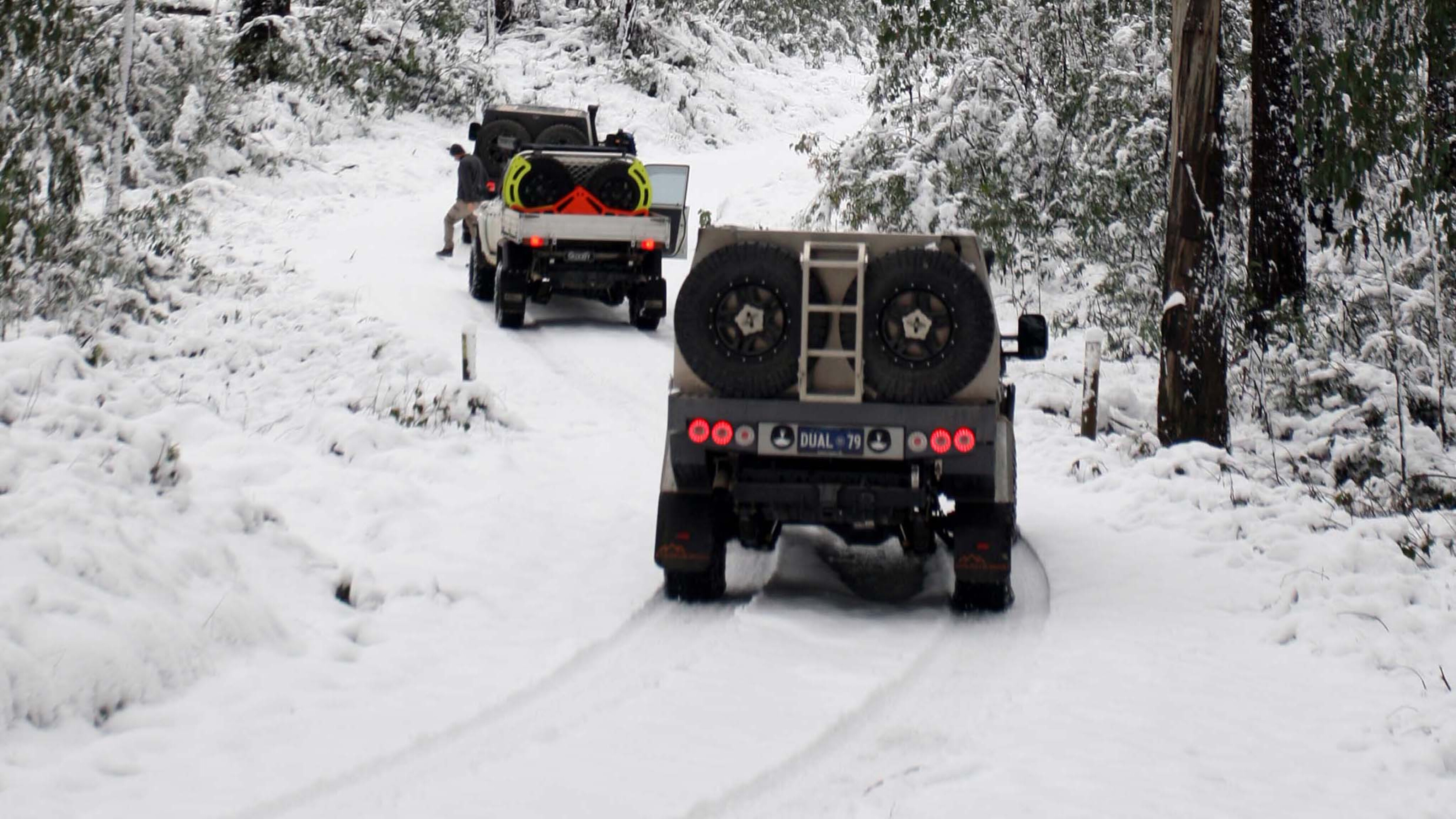
If you don’t know 100 percent what you’re driving into, stay on the track.
Ditches, washouts and culverts can all quickly fill with soft-packed snow, bringing them to the same level as the road, until you put a wheel into them and find yourself helplessly bogged. If you don’t know 100 percent what you’re driving into, stay on the track.
If you do find yourself bogged, and you haven’t gone with a mate in a second vehicle, stay with the vehicle. If it’s cold enough to snow, it’s cold enough that you’ll have a bad time trying to hike out of the bush to get help.
Even if you’re low on fuel your engine will idle all night, keeping the heater running. If the UHF or satphone don’t get you out of strife, the friend or family member you told your plans to will be able to help.
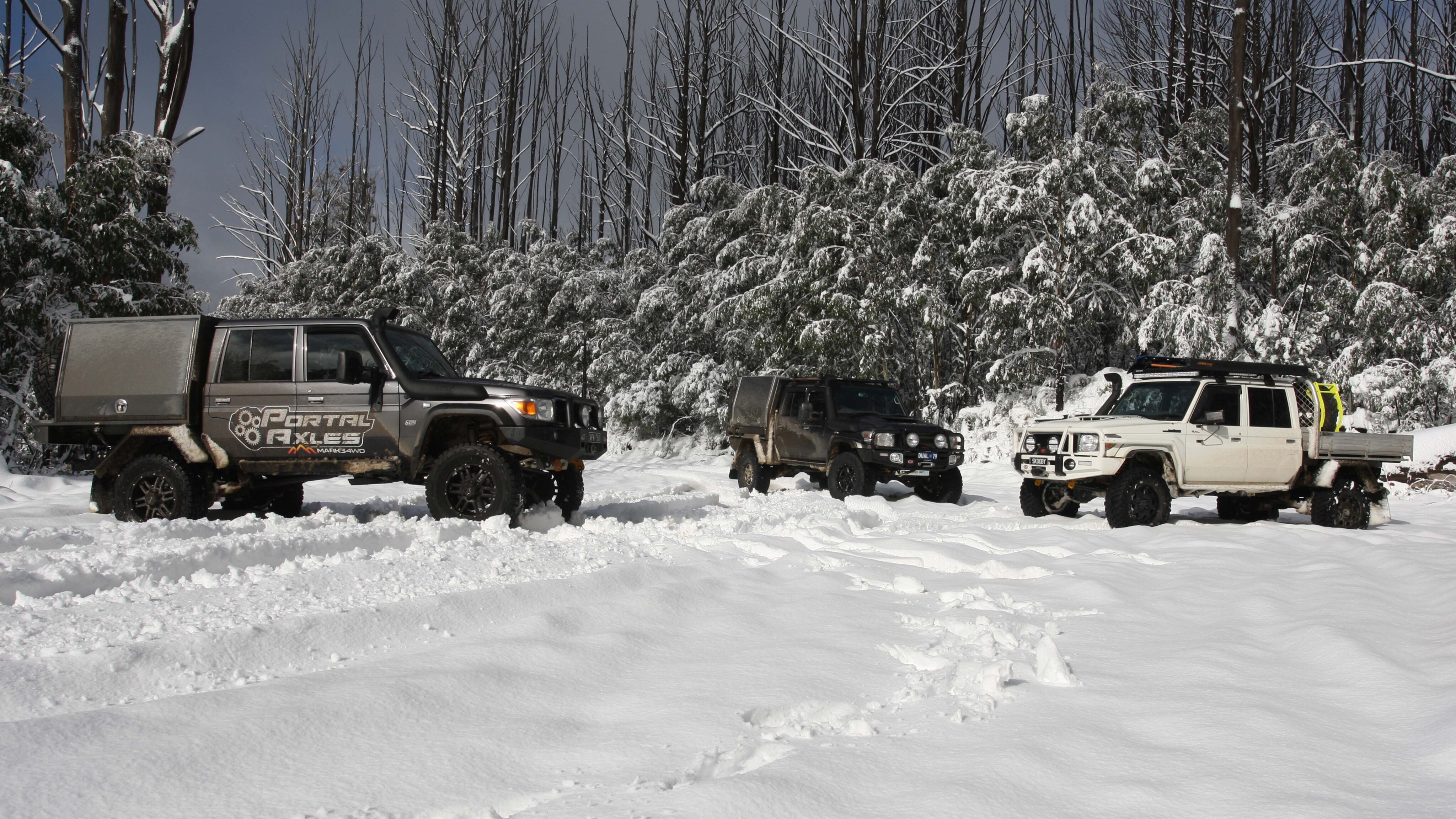
In chains
If you’re looking for a little extra something up your sleeve when it comes to snow capability you can’t go past a set of chains.
Available in a variety of different sizes to suit your tyres perfectly, snow chains are mandatory in a bunch of alpine regions thanks to the additional safety on icy roads they provide.
Fitted up to your steer tyres, they’ll see you safely driving through terrain that’d have others spinning on the spot, but you will need to adjust them when you air down and take them back off when you’re out of the danger zones. If you’ve never fitted them up before, have a practice run in the dry when your fingers don’t hurt.

COMMENTS